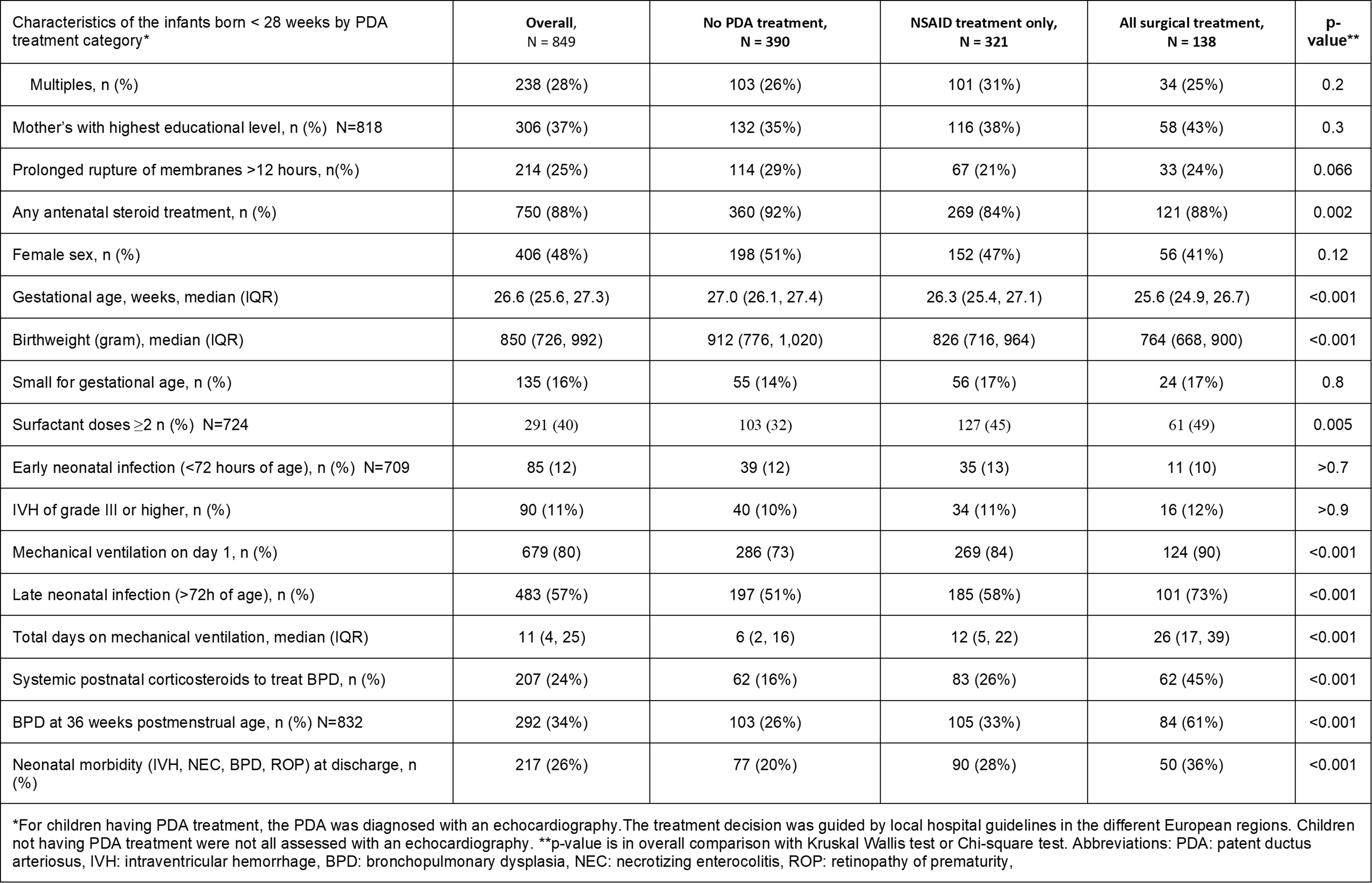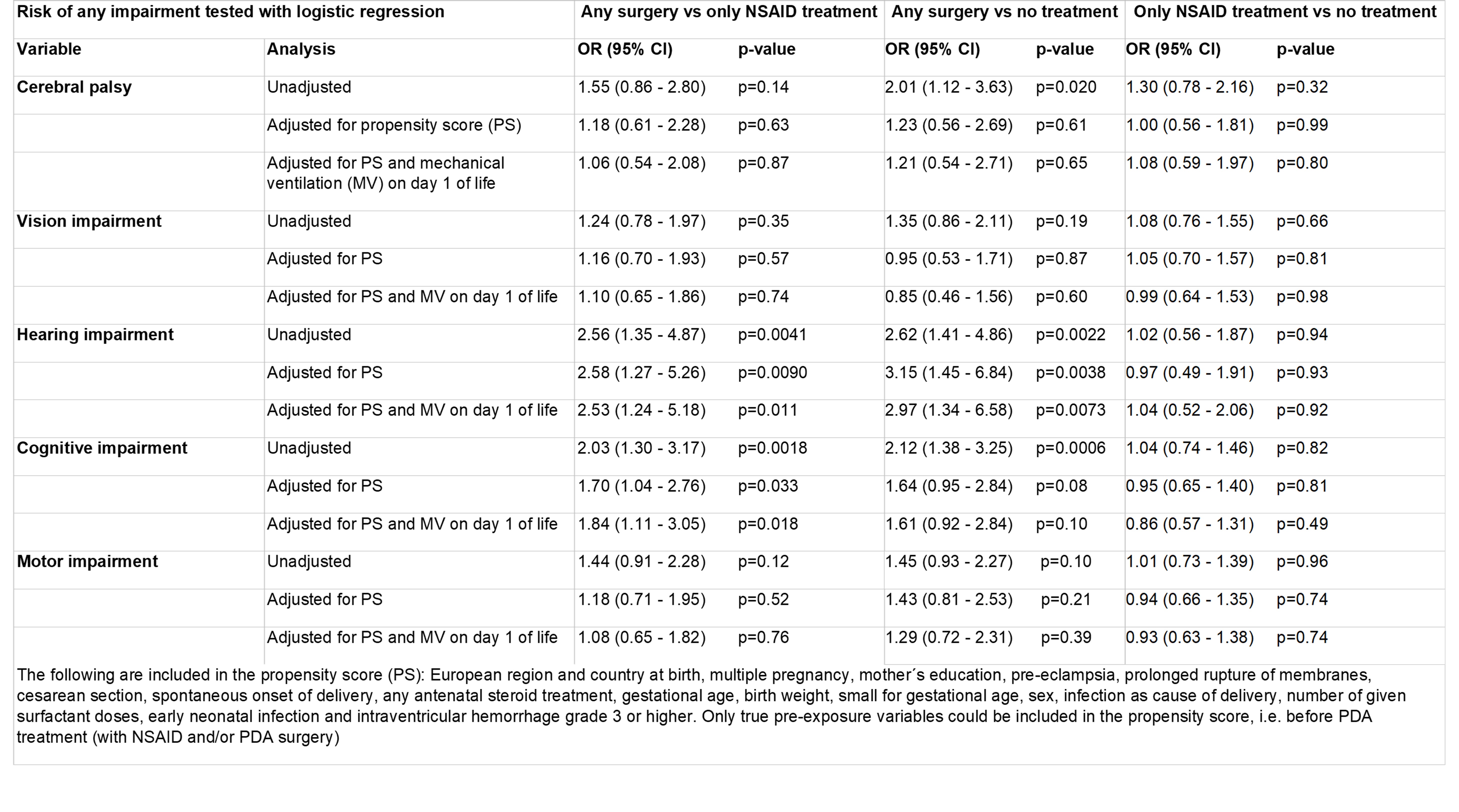Neonatal Cardiac Physiology/Pathophysiology/Pulmonary Hypertension
Neonatal Cardiac Physiology/Pathophysiology/ Pulmonary Hypertension 1
217 - Impact of neonatal patent ductus arteriosus (PDA) management on neurodevelopment at 5 years of age in children born extremely preterm
Publication Number: 217.329
- AG
Anna Gudmundsdottir, MD (she/her/hers)
Consulting neonatologist and Postdoc
Karolinska Institutet
Solna, Stockholms Lan, Sweden
Presenting Author(s)
Background: Optimal management of a hemodynamic significant PDA in extremely preterm (EPT) infants is debated. PDA surgery has been associated with adverse neurodevelopment in toddlers but studies at school-age are scarce.
Objective: This study investigated the association of PDA treatment with non-steroidal anti-inflammatory drugs (NSAIDs) and surgical PDA treatment with neurodevelopmental outcomes at 5 years of age in EPT children.
Design/Methods:
Children born < 28 gestational weeks in 2011-12 (n=849), included in the Screening for health in very preterm infants in Europe (SHIPS) prospective cohort study from 11 countries in Europe, were enrolled in the current study. The outcomes were measured by standardized cognitive (Wechsler Preschool and Primary Scale of Intelligence) and motor (Movement-ABC) assessments and parental questionnaire for hearing, vision and cerebral palsy (CP). In the analyses a mixed logistic regression model was used to assess the risk of any impairment (mild-moderate-severe) vs no impairment. Adjustments were made for a neonatal risk factor propensity score.
Results:
Table 1 describes the cohort characteristics by PDA treatment. Regression results are shown in Table 2. No significant associations were found between NSAID PDA treatment only and neurodevelopmental outcomes when compared with children not treated for PDA. Children exposed to PDA surgery had significantly higher risk of cognitive impairment when compared to children only treated with NSAID, odds ratio (OR) 2.03 and confidence interval (CI)1.30 - 3.17. After adjustments for neonatal risks, the association was slightly attenuated, but still significant, see table 2. Similarly, the risk of hearing impairment was increased in the PDA surgery group vs NSAID treatment group, OR 2.56 CI 1.35 - 4.87. However, PDA surgery was not associated with cognitive impairment when compared with children not treated for PDA. Hearing was still significantly associated, OR 2.62 CI 1.41-4.86) in this comparison of treatment groups. No association was between PDA surgery and increased risk of CP, motor or vision impairment. Further sensitivity analyses with a propensity score matched cohort is planned as residual confounding by indication cannot be ruled out.
Conclusion(s):
PDA treatment with NSAID was not associated with adverse neurodevelopmental outcome at school age in EPT children. PDA surgery was associated with increased risk of cognitive and hearing impairment at school age. This information is important to take into consideration in the discussion on the current role of PDA surgery in PDA treatment. 

